I’m a little late to the Hallowe’en party this year…but better late than never. And in that spirit, here’s a set of animals that, if you mess with them, ‘late’ could be your proper adjective. Animals that as a group tend to create a visceral if generally unnecessary fear and loathing, even though most are harmless. Of course, some are not…very not. Obviously, I’m speaking of everyone’s favourite legless animals–worms. No, snakes! But in the spirit of things spooky and scary, here’s a set from Takara TOMY called ‘Assassin Fang’ featuring some of those species that inspire fear for their extremely potent venoms–and at least deserve some healthy respect. Even if every one of them is such a cool species you guys. Just don’t pet them. Or approach them. Or surprise them.
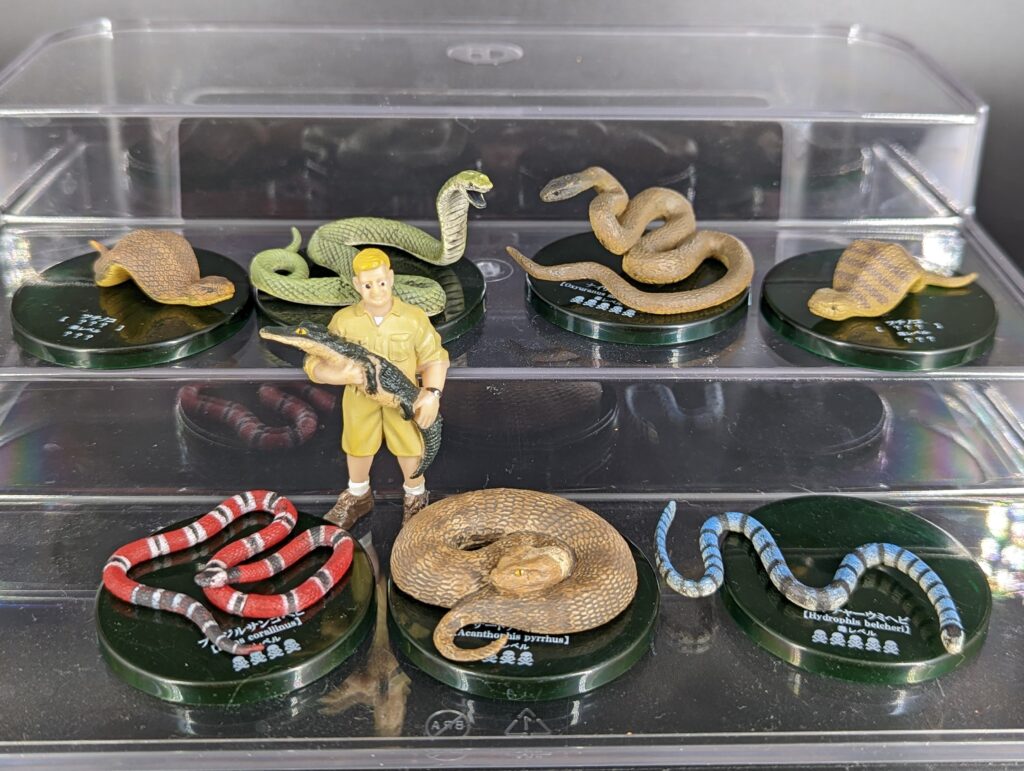
This is a gashapon Takara set from about 2013 and of course only available briefly. As is pretty standard for Takara gashapon of the time, each figure comes with a circular plastic base; sets can vary, but the bases for these are translucent green. Each is marked with a binomial Latin name (very helpful, every company should do this), a name in Japanese characters, and a rating of the venomous level…from 3 skulls to five. For the ‘real’ species. The secret chase figures (two of the same) are just left as ??? because they aren’t real so how would we know? Although some Takara sets have figures mounted on the bases using rods or pegs, the snakes are loose–fortunately, they are all very distinct and the included paper makes it clear which figure goes with which base for when they are inevitably mixed up. Now let’s take a look at them!
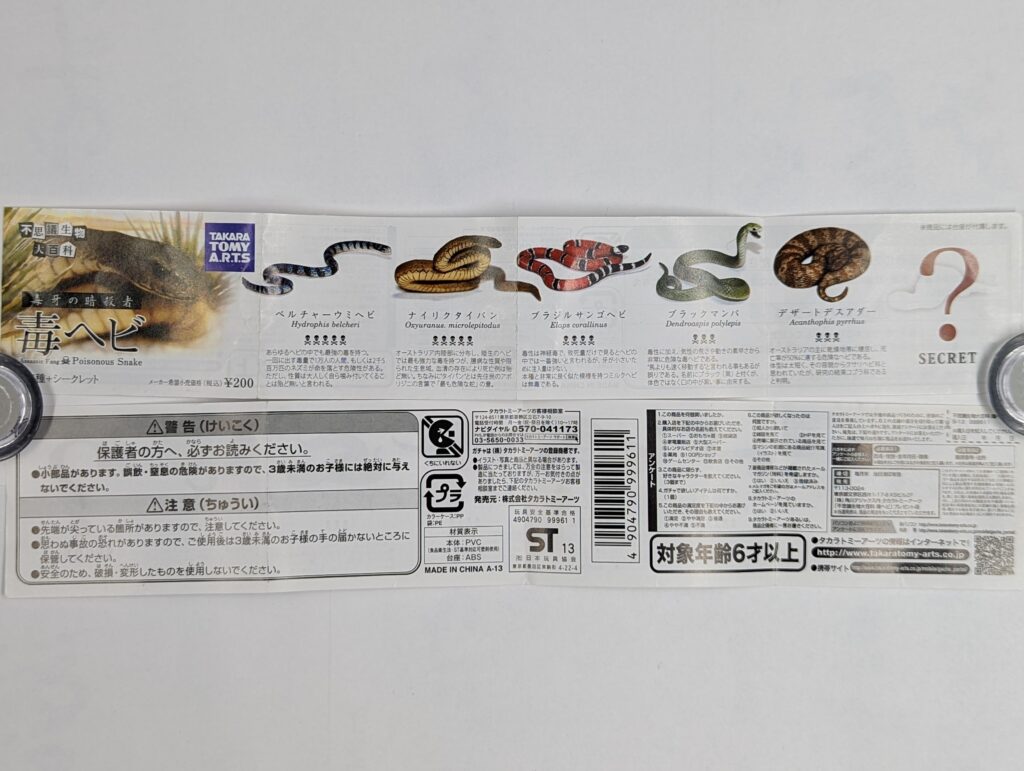
- Belcher’s Sea Snake (Hydrophis belcheri), also known as the faint-banded sea snake, is an incredibly venomous species of sea snake although it is apparently very reluctant to bite…and even then, reluctant to waste it’s venom on people (usually fisherman or other people inadvertently coming in contact). These snakes are found in the eastern Indian and southeast Pacific Oceans, marine predators that use their venom on fishy prey. They’re relatively small snakes, around 50cm to 1 metre. It should be noted that out of water, the species is apparently more yellow; this figure is very bluish with dark bands and kind of looks like a banded sea krait (the very dark head could indicate a juvenile…). The Redlist assessment for the species is Data Deficient. The figure itself is in a pretty basic serpentine swimming pose, sculpted well enough to demonstrate the short face and flattened tail. It’s one of the shortest figures at ~14 cm(measured along the body) with a scale of about 1:7 for a large specimen.

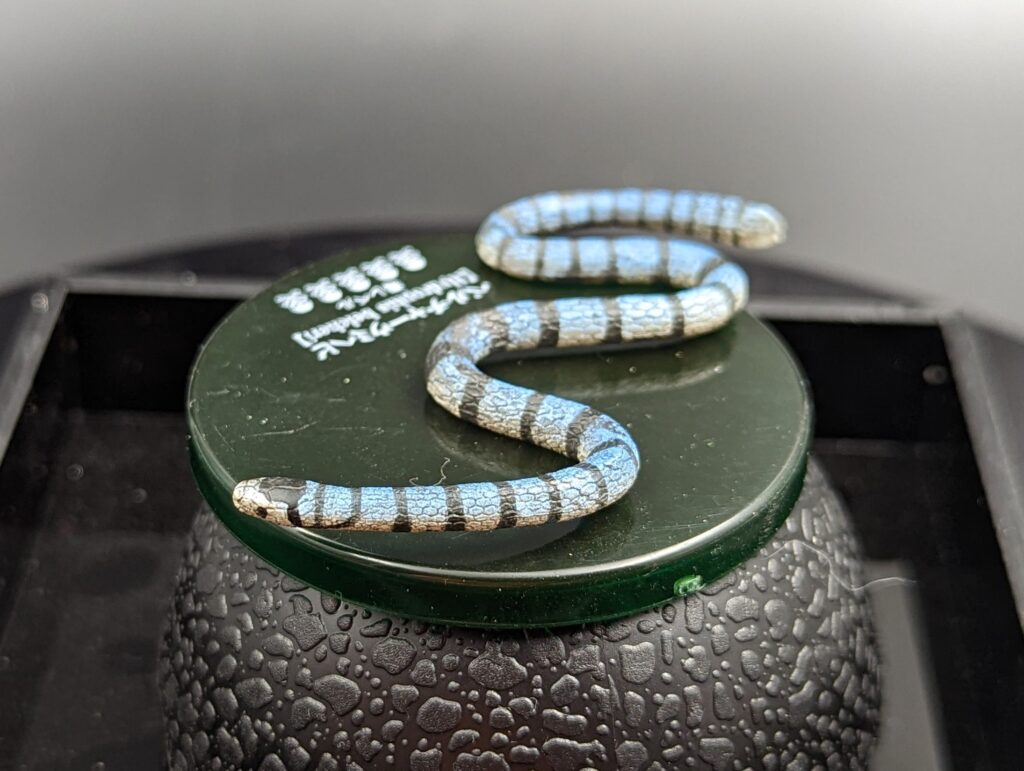
- Inland Taipan (Oxyuranus microlepidotus) AKA Fierce snake, is often touted as the most venomous snake in the world, based on the lethality of its venom; but given its range in the semi-arid central-east deserts of Australia, it doesn’t encounter people very often and (like most snakes) will generally only strike if provoked or cornered. The species is considered Least Concern, but of course is protected by Australian laws regarding, well, everything! It’s a pretty large snake, usually around 1.8 metres but being found up to 2.5 metres in length. They specialize on hunting mammals (hence, a venom that impacts people in a strong way), and attacks using several strikes instead of just once and then waiting, with multiple bites; the powerful venom is adapted such that the prey can be held by the snake while it strikes several times, and the prey dies before being able to flee or fight. So…scary. Don’t get bit. The model is a brilliant little model, a very slender snake with defined keeled scales. The pose is interesting, showing the snake in a loose coil, raised and ready to strike. It’s also one of the longest figures, about 23 cm along the body, so the scale can be 1:7 to 1:10 (with snakes, it all depends on assumed real length)

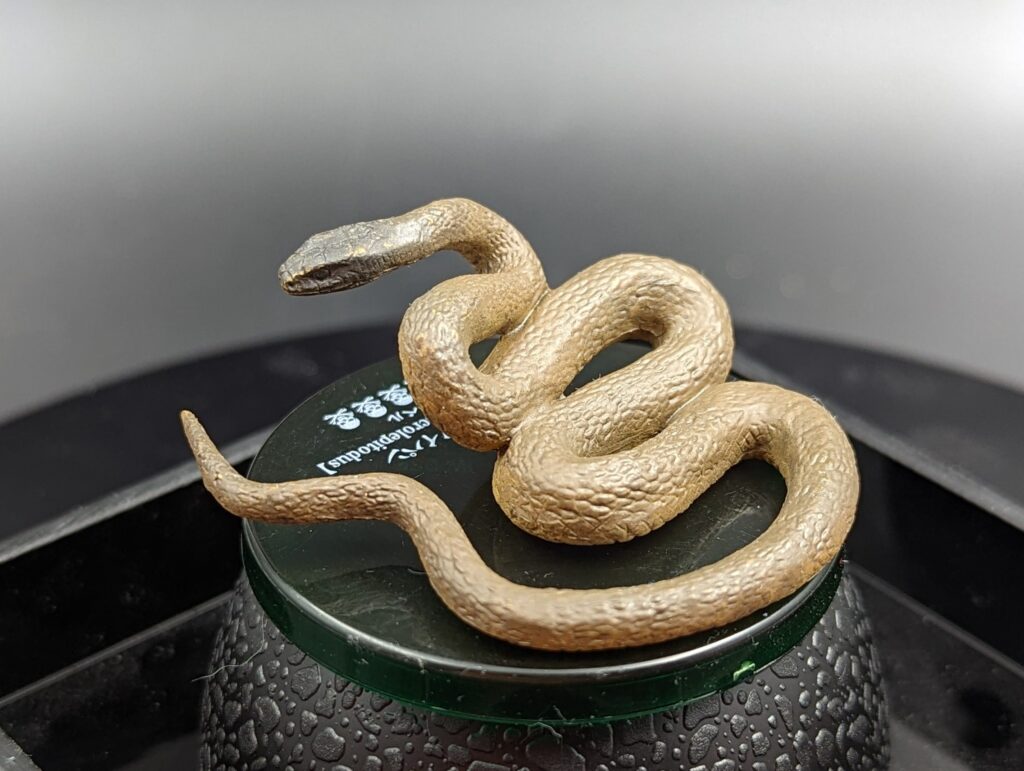
- Painted coral snake (Micrurus corallinus) (erroneously marked as the synonym Elaps corallinus). A well know type of snake from the Americas, coral snakes are well known as a group of venomous snakes with distinctive bands of black, red and yellow or white; notably, coral snakes can be visually identified (and avoided) by noting that the black rings are bordered by the light colours, never touching the red. Handy! This species represents a coral snake from South America, in particular northern Argentina, southern Brazil and Paraguay, within the Amazon basin. They are nocturnal predators of reptiles like other snakes and lizards. They are also relatively small, a most 98cm long, but more likely 68cm or so. And, like the other species, while powerfully venomous, they are reluctant to actually bite as long as left alone. The species is listed as Least Concern. The figure is in what looks like a resting or observing pose, with a big loose coil and the head resting on the body. The bands show appropriate variating in thickness, leading to the very distinctive alternating black and white tail (although some photos show a bit of red peeking through for some individuals). The figure itself is about 18cm long, giving a rough scale of 1:5 (the smallest scale figure in the set).

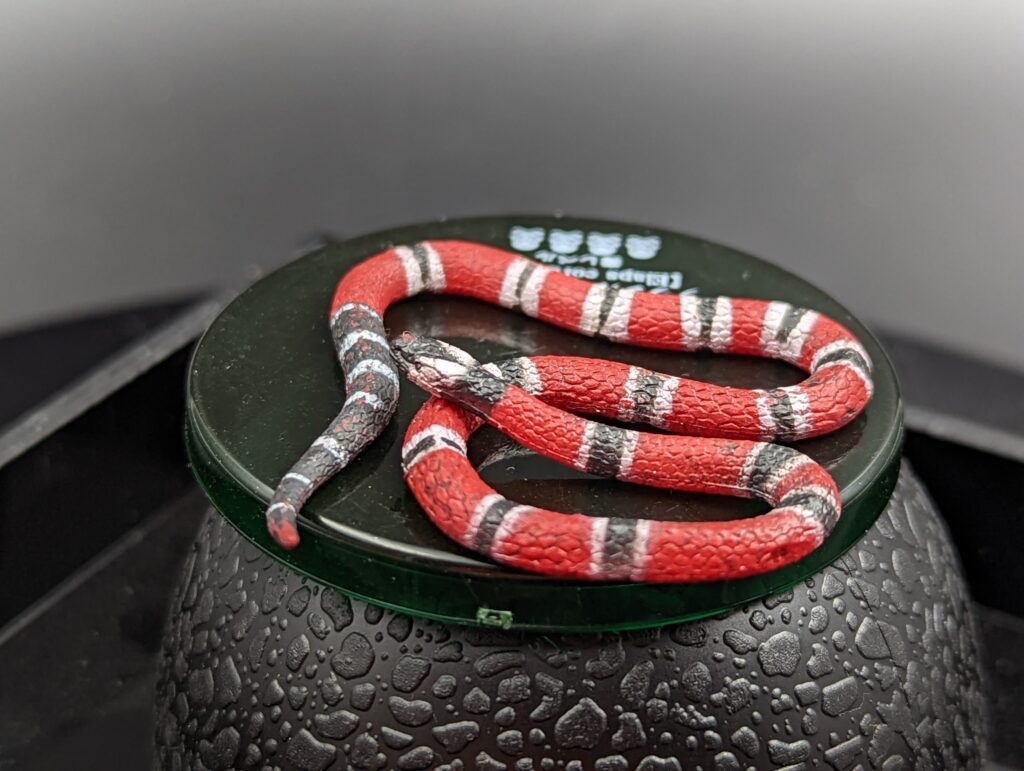
- Black mamba Dendroaspis polylepis. One of the more immediately familiar species in the set, mambas are well-known for the strong venom–and unlike most of the species in the set, less reluctance to use it (or at least that’s the legend). It’s a big species, often reaching 3 metres in length and second only to king cobras in length for venomous snakes. They are found in sub-Saharan Africa where they are far more terrestrial than other mamba species (but can be arboreal) and live in a wide range of habitats, including savannah, woodland, scrub, and dense forest, where they primarily hunt birds and mammals but might also take snakes. This is the most widespread mamba and is overall considered Least Concern.
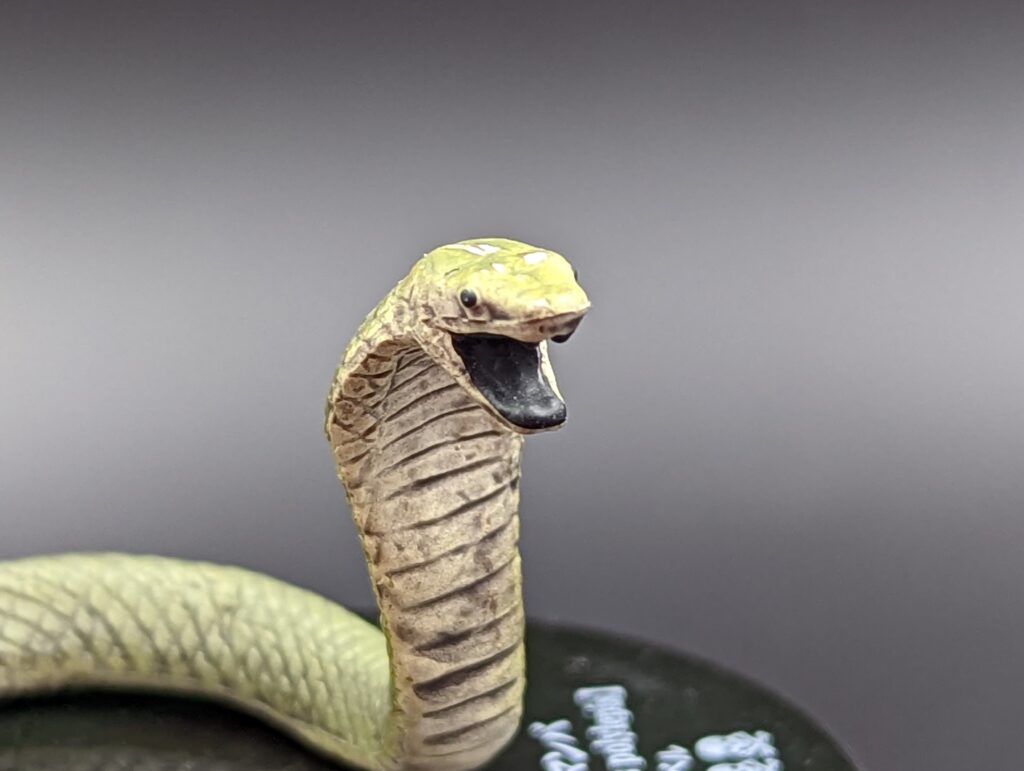
Looking at the figure, the first thing to note is that the figure is not very black…but then, black mambas’ bodies rarely are. The figure is painted in a brighter olive green (which seems a bit too green) although they can be grey, brownish or khaki; the name ‘black’ comes from the mouth–and they indeed captured that feature. Displaying the black mouth interior is part of the threat display of a black mamba, along with the spreading of a hood; it’s similar to that of a cobra, although narrower. It’s nice to see the figure showing this display, as it is probably less familiar than in cobras. The pose is a broadly coiled snake, reared up in a threat display, which is engaging. The paint job…it’s sloppy. The aforementioned bright olive colour is fine but there’s a fairly uneven black wash along the figure’s back, and worse, splashes on what should be a white belly. It’s another long figure, about 22cm long, giving a scale up to 1:11


- Desert Death Adder (Acanthophis pyrrhus), another very venomous animal from Australia! Although they only somewhat overlap, with the desert death adder being from from Western Australia through to the central regions (and not to be confused with the southern death adder, which does not overlap). It is a relatively thick and stocky snake, up to 70cm long, with a wide head, broad body, and thin tail. This latter feature is used as a lure bring prey, especially mammals and lizards, within striking range. They tend to be found in remote grassy or rocky areas, so hopefully don’t come in contact with people very often. They are considered Least Concern, but habitat disturbance is a potential threat. The figure is a very nice one, with the snake tightly coiled in an ambush-ready pose, tail out to attract prey. The colours are appropriately brownish bands, although possibly a bit wider and less distinct than they should be. Coiled up, it is about 18cm long, so about 1:6 scale.
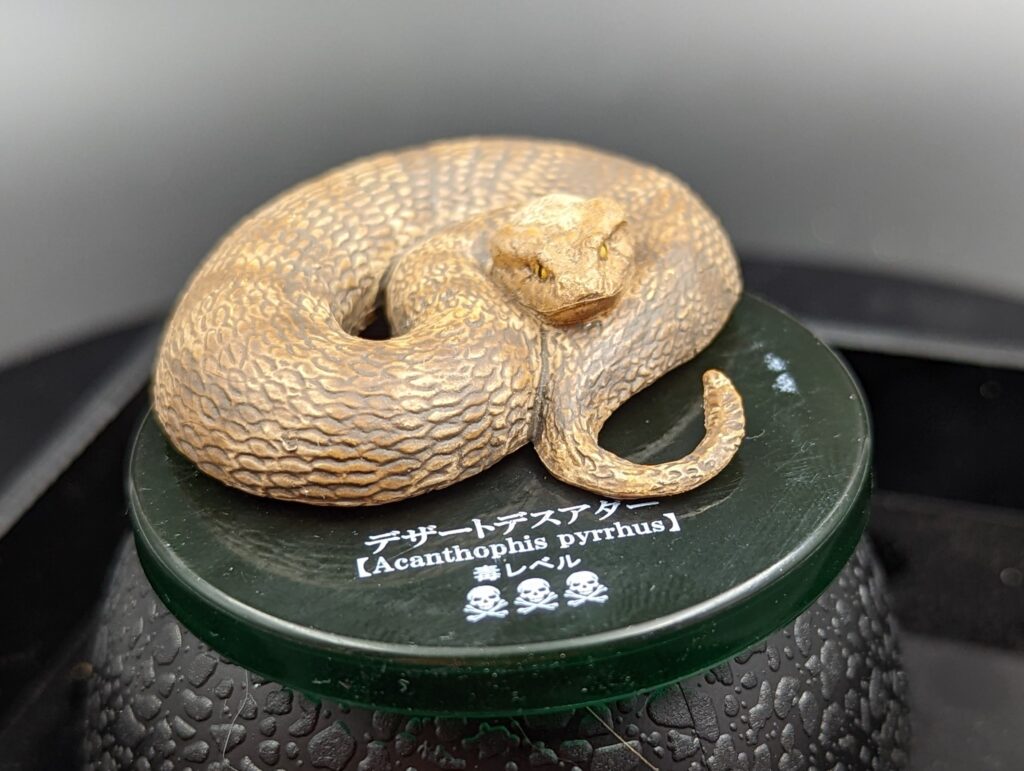
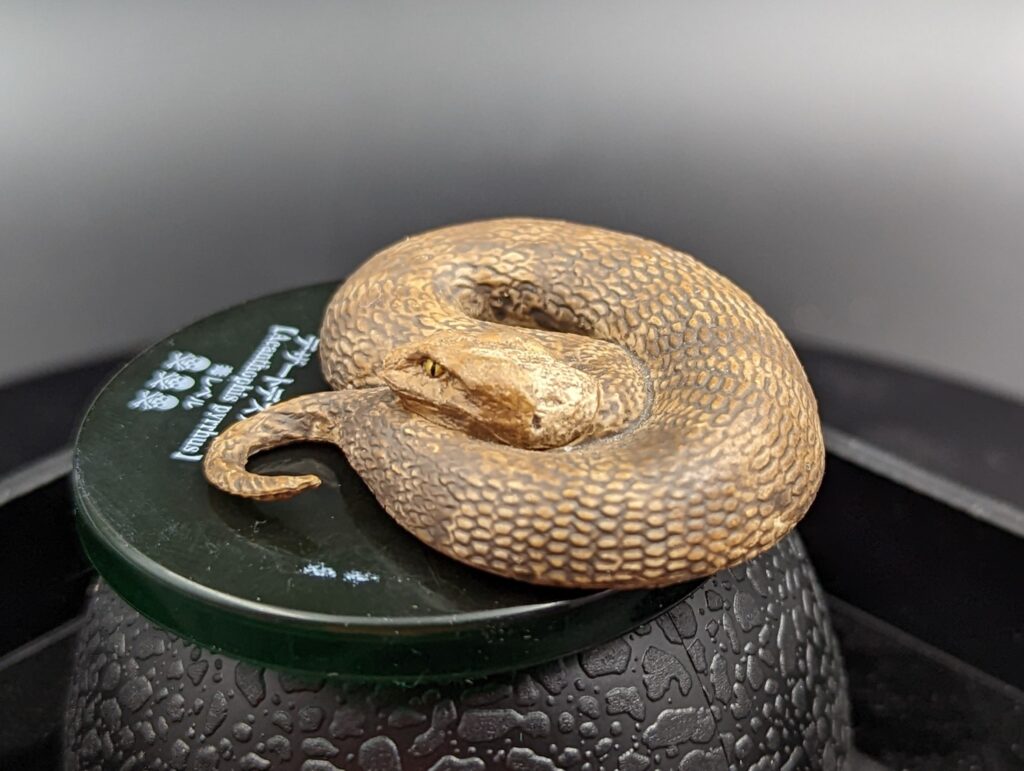
- and 7. Tsuchinoko secret figure in striped and plain brown patterns. These two figures are the secret chase models for the series…they represent a cryptid or mythical snake from Japan. Would I have preferred a real Japanese species? Yes. Yes I would have. But the tsuchinoko is often included in Japanese sets (often as chase figures) so must be important and familiar to at least the customer base for sets like these. According to legend they can be 30 – 80cm long, with a flattened body wider than their head. They may be able to leap 1 metre forward…then up?…can speak, and enjoy alcohol. They may also bite their tails and roll like a hoop. I described a Tsuchinko figure featuring this behaviour on my personal blog here. The figures are in two different patterns and I guess I was able to get both of them…they are about 7.5cm long, so their scale ranges from 1:4 to 1:10 depending on where you land with the sizing!
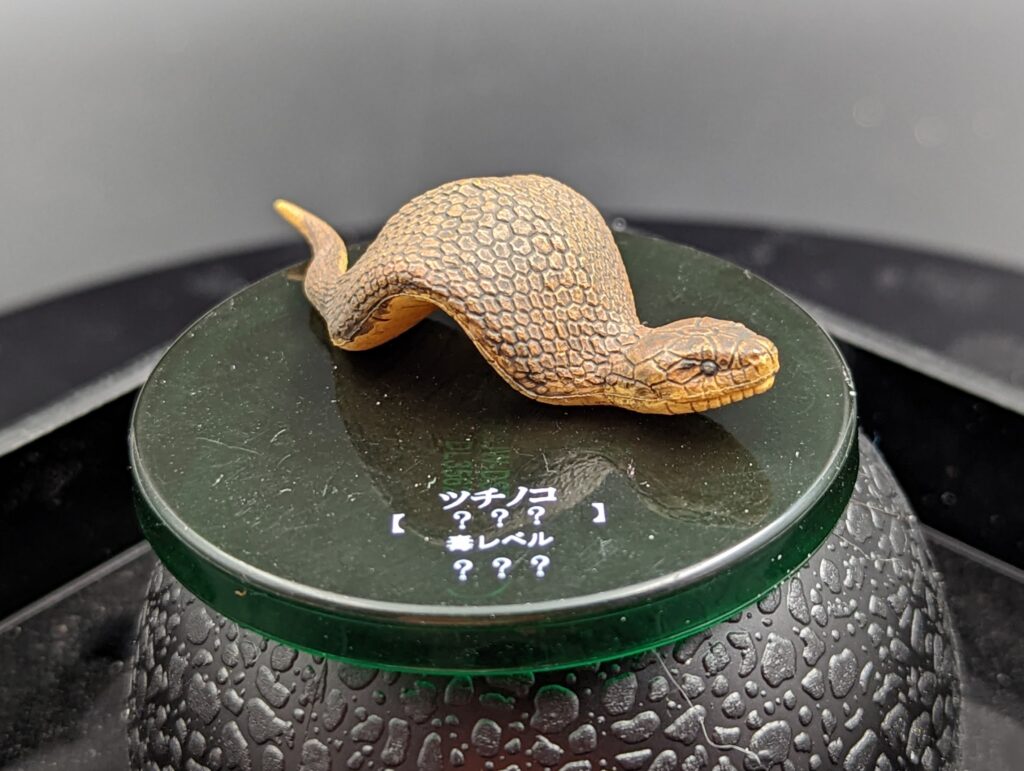
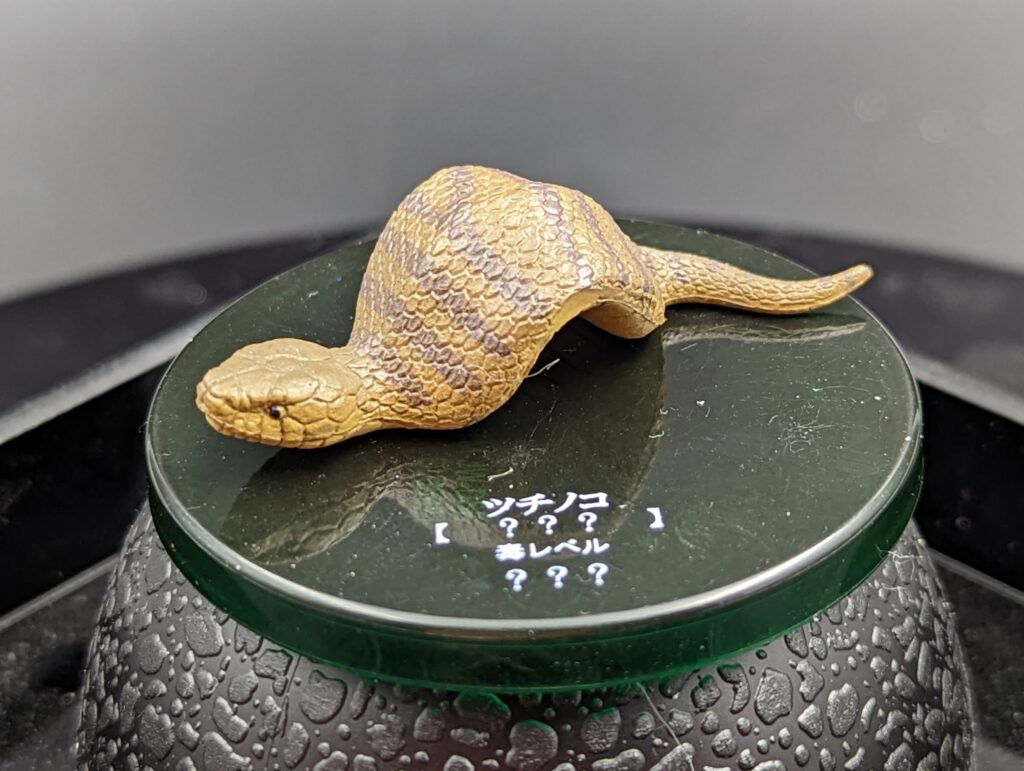
So now that we’ve seen a few of the most dangerous snakes around (as small figures) there’s nothing to be afraid of after all. If I had any complaint, it would have been nice to see a species from Europe/Mainland Eurasia and/or North America. It’s not like there aren’t venomous snakes from either of those areas. I realize it might have cut into the Tsuchinoko figures but I’m personally okay with that! Overall, a very nice set that wasn’t noticed much at release, and can probably be found through reseller sites for reasonable amounts (have I looked? No. I could be very wrong).
And Happy Hallowe’en!
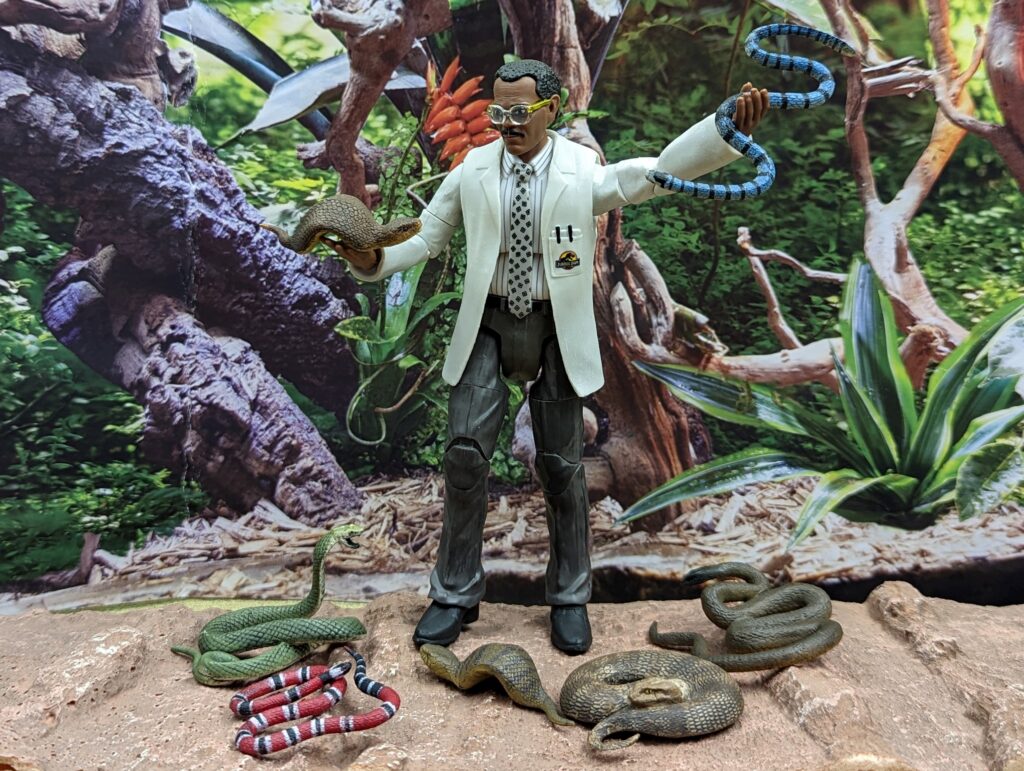
You can support the Animal Toy Blog by making your animal toy purchases through these links to Ebay and Amazon.
Disclaimer: links to Ebay and Amazon on the AnimalToyBlog are affiliate links, so we make a small commission if you use them. Thanks for supporting us!




I have this set; I also have the similar Venomous Spiders and Scorpions by Takara. I was actually also going to review one of those two latter sets this month, but the month got away from me.
That last photo is awesome and hilarious!
I knew of the other two (Takara has made a number of strange sets… I mean, I could review the Carnivorous Plants if it didn’t stretch the blog to the breaking point).
This one just felt right for the season
Do you have any sellers/outlets in Sydney? My grandson is very keen to have one of your rattlesnake for his birthday gift. Can you advise please. Many thanks, Gillian
Can’t help you with this set. These are long out of production.
But, if you mean Sydney Australia, I would highly recommend checking out minizoo.com.au. Great online shop with all kinds of critters
A great review to finish off October with, better late than never. And I love the parting shot with Sam Jackson and the TV version of his famous line. Very clever.
A note on coral snake identification: The “red touches yellow, kill a fellow, red touches black, venom lack” rule is not 100% reliable in the U.S. and outside of the U.S., not reliable at all. There are species of coral snakes in South America where red does touch black. In North America there are also individuals and populations with atypical patterns that do not conform to the oft touted rule. Patternless, melanistic, and such. And even if it works most of the time there is also a non-venomous species of shovelnose snake in the southwest which has red touching yellow, just like a coral snake. Long story short, just don’t touch any snake you cannot confidently identify based on features other than color alone.
Yeah, I learned that like, the day after.
Ready, aposematic coloration should always be respected, just to be safe